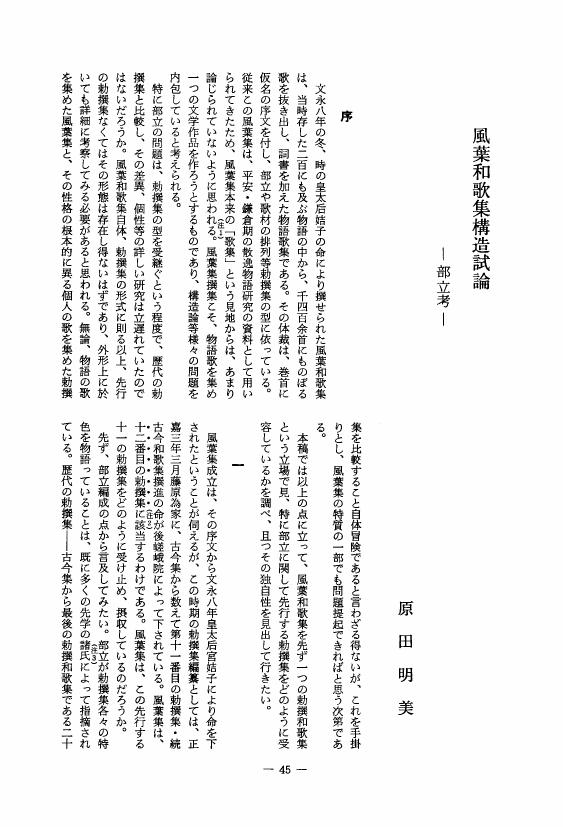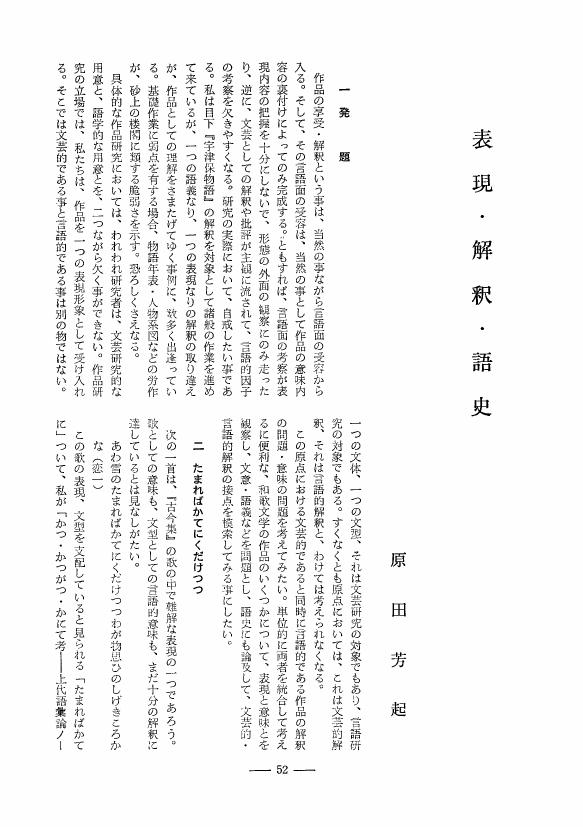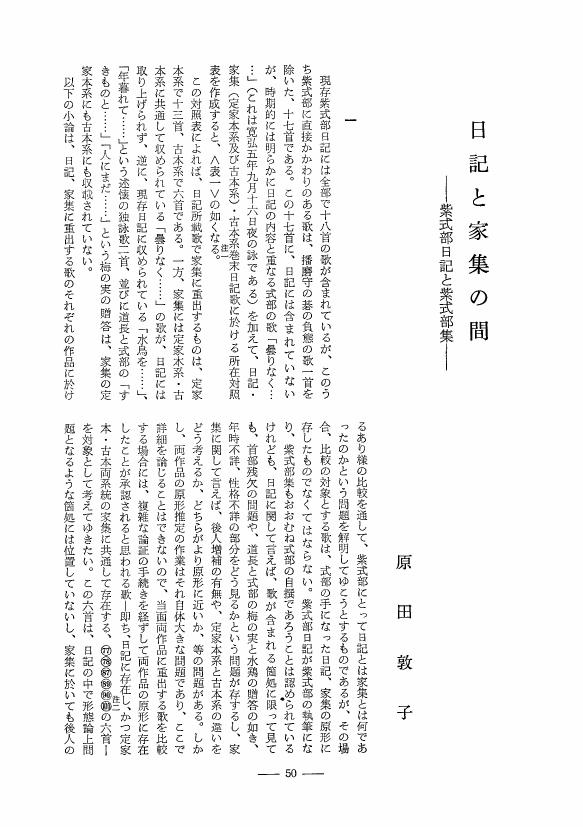A rigorous program of adjustment for any geodetic network must have a useful file of geoidal heights in its own to adjust strictly observations by GPS for space vectors. The program, by which geoidal heights can be automatically computed without missing its fine undualtion at every point where vertical deflection is observed, was newly added to the Universal Program of geodetic net-adjustment. The conventional method to find geoidal heights successively along routes linking neighboring vertical deflection points seems not elegant mathematically, because selections of routes are too arbitrary. It ishighly mathematical to find out geoidal heights at all vertical deflection points badjusting simultaneously all observation equations of vertical deflections which are ex pressed as the function of their geoidal heights. Although it seems geophysically reason able that geoidal heights are expressed by a curved surface with the mathematical formula written by coordinates on the surface of the earth, we are afraid that it might miss local fine undulation of geoid. In order to adjust rigorously geodetic network including GPS-observations, it is desirable that every vertical deflection point has its more reliable geoidal height. Vertical deflection at a point is decided by a local shape of the geoid around it. Then we think a new method as follows : Q We make a local geoid by using geoidal heights (rough height+small unknown correction) at several vertical deflection points inside a circle drawn around a vertical deflection point. Q2 We make both observation equations for I(north-south component) and (east-west component) of vertical deflection at thecentral point by considering the difference between geodetic longitude (latitude) and computed astronomical longitude (latitude) to be the direction of normal to the local geoid through the point. (3) We can find better geoidal heights at all vertical deflection points by solving simultaneously all observation equations by means of the method of least squares. How to derive a local geoid mathematically is the most important problem in abovementioned method. A curved surface with higher order terms requests many surrounding points. Reliability of local geoid made by using remote points deteriorates. Vertical deflection points are distributed locally in remarkable high and low densities. We adopted the following sophisticated way with much freedom after considering those peculiarities above.
1 0 0 0 OA ショッピングモールのフードコートにおける座席占有行動
- 著者
- 原田 昌幸
- 出版者
- 日本建築学会
- 雑誌
- 日本建築学会環境系論文集 (ISSN:13480685)
- 巻号頁・発行日
- vol.82, no.734, pp.309-315, 2017 (Released:2017-04-30)
- 参考文献数
- 7
Currently, a restaurant or a cafeteria is often used not only as a place to have a meal but also as a place to work, take a rest, or just kill time. This change has become significantly enhanced by the development and wider availability of wireless networking services that facilitate all types of internet interaction from recreational use to work from just about any place. At many self-service restaurants, customers can not only select their own seats but also move one or more tables together to create more space for themselves. However, when customers are allowed this freedom, it is not uncommon that other customers are inconvenienced because a single customer has taken up many seats, especially during peak operating hours. The objectives of this study are to identify and clarify the characteristics of seat use and over-use behaviors based on customer behaviors in the food court of a shopping mall. The observation target for this research was a food court in a large shopping center in Nagoya, Japan where customers are free to choose their seats and connect tables as they like. Activities besides eating and drinking, such as studying are also tacitly permitted by the establishment. The observation time was from 10:00 a.m. to 2:00 p.m. and included both crowded and relatively empty time periods. The observation survey was conducted on 13 weekdays and 10 weekends, and more than 600 groups and more than 1, 400 customers were observed. The observed items included customer age categories and gender (estimated by the observer), the number of group members, arrival and departure times, tables and seating choices, and the activities in which they engaged. After observation, it was found that the customers ranged widely in terms of age, from young children (even less than 10-year olds) to senior citizens, with a large number of teenage customers too. There were many single customers on weekdays, whereas on weekends nearly all customers were in groups. The seats chosen most often on weekdays were the bench seats with the atrium to its back, with a slight difference in choosing bench or chair seating on the weekends. Also, looking at how customers tended to choose seats, they regarded the distance or nearness to other customers, which indicated that interpersonal distance had an effect on seat selection in this study. Regarding extra seat usage, during the week people in age groups from teenagers to 40-year olds used seats for longer than necessary, with a shift on the weekends to teenagers and people in their 20s, especially teenagers. People who were engaged in chatting were the predominant long-users, with people studying on weekends spending inordinate amounts of time taking up space in the food court observation area during the hours of the study. Taking up extra seats was observed much more on weekdays compared to weekends, and decreased significantly on crowded weekends. During the week men more than women took up more extra seats, which likely reflects a cultural norm regarding personal space. However, on both weekdays and weekends, single people and people 70 years old or older tended to take up extra seats for themselves. Interestingly, during the week, resting and reading seemed to require the most seat overuse, but studying took over the number one slot on weekends, followed by resting and reading. Again, the need for more interpersonal distance might be important to being comfortable resting and reading in such a public place.
1 0 0 0 OA 抗酸化物質としてのレスベラトロールの多機能性
- 著者
- 三谷 塁一 原田 直樹 山地 亮一
- 出版者
- 公益社団法人 日本ビタミン学会
- 雑誌
- ビタミン (ISSN:0006386X)
- 巻号頁・発行日
- vol.86, no.12, pp.687-689, 2012-12-25 (Released:2017-10-10)
- 参考文献数
- 19
1 0 0 0 OA 自動プログラミング:事務処理分野における自動プログラミング
1 0 0 0 OA 誤嚥を契機にみつかり,上気道狭窄が進行した頸椎びまん性特発性骨増殖症
- 著者
- 芥川 晃也 櫻井 聖大 深水 浩之 松尾 悠史 山田 周 渋沢 崇行 清水 千華子 北田 真己 原田 正公 高橋 毅
- 出版者
- 一般社団法人 日本臨床救急医学会
- 雑誌
- 日本臨床救急医学会雑誌 (ISSN:13450581)
- 巻号頁・発行日
- vol.24, no.1, pp.76-80, 2021-02-28 (Released:2021-02-28)
- 参考文献数
- 10
症例は63歳,男性。1年前より食事時の咽せを自覚していた。誤嚥性肺炎と横紋筋融解症に伴う急性腎障害の加療目的に当院入院となった。抗菌薬投与と連日の透析治療を行い,入院8日目に嚥下内視鏡検査を行ったところ,咽頭後壁の膨隆があり,声門部が視認困難であった。頸椎CTではとくにC2-C4レベルで椎体前面の骨棘形成が顕著で,びまん性特発性骨増殖症(diffuse idiopathic skeletal hyperostosis;DISH)の診断となった。入院時より睡眠時のいびきがあったが,気道狭窄音が目立つようになったため,入院13日目に気管挿管を行い,のちに気管切開を施行した。最終的に頸椎骨搔爬術を行ったことで,上気道の狭窄が解除され気管孔を閉鎖でき,嚥下障害も改善した。DISHはまれな疾患ではなく,頸椎病変を伴うDISHは,嚥下障害や誤嚥性肺炎,上気道狭窄の鑑別疾患として重要である。
1 0 0 0 OA 読書による情報収集と実践に基づくコミュニケーションスキル強化の具体的提案
- 著者
- 原田 昭治
- 出版者
- Japanese Society for Engineering Education
- 雑誌
- 工学教育 (ISSN:13412167)
- 巻号頁・発行日
- vol.55, no.1, pp.1_16-1_24, 2007 (Released:2007-02-09)
- 参考文献数
- 73
- 被引用文献数
- 1 1
Quick globalization increases the necessity of higher communication skill for everybody. However, in reality, modern tools such as mobile and internet spoil the face-to-face communication ability among young people. In this paper, reviewing related books of communication skill in conjunction with speaking, hearing, reading and writing is first done on English as well as on Japanese. Parallel to this, self experience-based method for intensifying communication skill is described. Emphasizing points for improving each communication skill are concretely proposed in the body.
1 0 0 0 DPC導入のための病名マスタメンテナンス
- 著者
- 木村 理恵 山田 良弘 善本 哲郎 野崎 秀一 丸山 博英 原田 一孝
- 雑誌
- 診療録管理 : 日本診療録管理学会会誌 = Medical record administration (ISSN:0916345X)
- 巻号頁・発行日
- vol.20, no.2, 2008-08-31
- 著者
- 原田 和弘 阿保 勝之 川崎 周作 竹迫 史裕 宮原 一隆
- 出版者
- 一般社団法人 水産海洋学会
- 雑誌
- 水産海洋研究 (ISSN:09161562)
- 巻号頁・発行日
- vol.82, no.1, pp.26-35, 2018
<p>播磨灘北東部沿岸(兵庫県明石市から加古郡播磨町沖)のノリ漁場周辺における溶存態無機窒素(DIN)の動態とノリの品質を調査した.当海域の表層DIN濃度は,港湾内や下水処理水放流口周辺で高い傾向にあった.また,表層DIN濃度の水平分布は海岸線に沿った岸寄りの東西方向に比較的高い濃度域が広がり,沖合域は低かった.塩分やアンモニア態窒素濃度の観測結果から,調査海域東部沿岸に位置するノリ漁場周辺では,下げ潮時(当海域では東流)に港湾からの流出水および下水処理水からの栄養塩供給を受けている可能性が示唆された.また,数値シミュレーション結果でも,放流された下水処理水は下げ潮時に東の方向に流れ,ノリ漁場に到達すると判断された.さらに,同漁場のノリの色調は,港湾流出水や下水処理水等の影響を受けやすい沿岸側で良好であることが判明した.</p>
1 0 0 0 熊本県の家庭料理 副菜の特徴
- 著者
- 秋吉 澄子 小林 康子 柴田 文 原田 香 川上 育代 中嶋 名菜 北野 直子 戸次 元子
- 出版者
- 日本調理科学会
- 雑誌
- 日本調理科学会大会研究発表要旨集
- 巻号頁・発行日
- vol.31, 2019
<p>【目的】日本調理科学会特別研究「次世代に伝え継ぐ 日本の家庭料理」において,地域に残されている特徴ある家庭料理を,地域の暮らしの背景とともに記録し,各地域の家庭料理研究の基礎資料,家庭・教育現場での資料,次世代へ伝え継ぐ資料などとして活用することを目的に,聞き書き調査を行った。本研究では,熊本県の「副菜」の特徴について検討した。</p><p>【方法】熊本県内を6地区(阿蘇,県北,熊本近郊,県南,天草,球磨)に分類し,昭和35〜45年頃に各地域に定着していた家庭料理について,11名の協力者を対象に聞き書き調査を行った。その調査結果や参考文献を基に,熊本県の副菜の特徴を検討した。</p><p>【結果および考察】野菜のおかずでは,本県の郷土料理として全国的にも有名な「一文字のぐるぐる」,大根を使った「こしょう大根」,「煮なます」,「のっぺ」,旬の食材を使った「たけのこのひこずり」,「菜やき」,「どろりあげ」が日常の食事によく作られていた。保存食(漬物)では,阿蘇の「高菜漬け」や「ふさぎり漬け」,県南の山間部で作られる「豆腐のみそ漬け」,もろみ味噌である「しょんしょん(しょうゆの実)」が作られていた。汁物では,大豆を使った「呉汁」や人吉・球磨地方の「つぼん汁」が挙げられた。その他,熊本近郊(西原地区)の「落花生豆腐」や阿蘇(高森地区)の「田楽」,天草の「みなみそ」が副菜として挙げられた。熊本県の副菜の特徴として,地元で採れる旬の食材を使用し,しょうゆ・みそでシンプルに味付けをした料理が多く,油で炒めるなどの方法により,うまみやコクをプラスする工夫が見られた。採れた食材を無駄にすることなく,すべて頂くといった先人の知恵も生かされていた。</p>
1 0 0 0 OA テクスチャ合成によるキャラクタ顔のメイク表現 — 印象評価のポジショニング分析 —
- 著者
- 藤澤 隆史 土屋 晋 高島 杏菜 原田 甫 長田 典子
- 出版者
- 一般社団法人 電気学会
- 雑誌
- 電気学会論文誌C(電子・情報・システム部門誌) (ISSN:03854221)
- 巻号頁・発行日
- vol.127, no.4, pp.667-673, 2007-04-01 (Released:2007-07-01)
- 参考文献数
- 16
In this study, we evaluated observers' impressions on different styles of make-up applications. We showed the observers various styles of make-up for 3DCG characters, and they scored their impression of the made-up faces. In experiment 1, to identify the impression dimensions for the made-up faces, we had 38 undergraduate subjects evaluate 4 make-up styles using 23 adjectives. As a result, we extracted 2 factors, "external appearance" and "internal feeling" about the characters. In experiment 2, we had 70 undergraduate subjects evaluate 5 make-up styles using 7 adjectives. We applied the “positioning analysis" method for the SD data, and mapped the loading values for make-up styles (targets) and adjectives (scales) on a 2 dimensional plane. The results showed that the adjectives were different for each make-up styles, suggesting that the impression of CG characters can be controlled by make-up using texture synthesis.
1 0 0 0 OA 心的イメージ処理特性が中学校理科の期待信念に及ぼす影響
- 著者
- 原田 勇希 鈴木 誠
- 出版者
- 日本教育工学会
- 雑誌
- 日本教育工学会論文誌 (ISSN:13498290)
- 巻号頁・発行日
- pp.41049, (Released:2017-08-31)
- 参考文献数
- 64
- 被引用文献数
- 3
本研究の目的は,中学校理科に苦手意識を持ち,動機づけ,とりわけ期待信念が低下しやすい個人特性を明らかにすることである.先行研究の知見を受け,理科学習でのつまずき経験と関連する個人差変数として心的イメージ処理特性に,つまずきが期待信念に与える影響を調整する変数として能力観に着目して理科4分野の期待信念に及ぼす影響を検討した.その結果,空間イメージ処理に苦手さのある生徒は理科に苦手意識を持ちやすいことが明らかとなり,特に物理分野でこの傾向が顕著であった.また物理と化学分野では能力観によってその影響は緩衝され,拡大的能力観を保有していれば,空間イメージ処理に苦手さがあっても統制感が比較的維持される傾向にあった.さらに生物分野の統制感には物体イメージ処理の影響が強く,分野によって要求されるイメージ処理の特徴が異なることが示唆された.
1 0 0 0 OA 援助行動と動機・性格との関連
- 著者
- 原田 純治
- 出版者
- The Japanese Group Dynamics Association
- 雑誌
- 実験社会心理学研究 (ISSN:03877973)
- 巻号頁・発行日
- vol.30, no.2, pp.109-121, 1990-11-20 (Released:2010-02-26)
- 参考文献数
- 16
本研究は, 7つの援助行動型ごとに, その行動といかなる援助動機・性格が関連するのかを検討した。大学生を対象に質問紙調査を行い, 援助動機の因子構造を分析した上で, 各援助行動型と動機・性格との関連を重回帰分析を用いて検討した。主な結果は, 以下の通りである。1. 「金品の譲渡・貸与」型援助とは, 「互恵と友好的関係」動機が関連し, また女性では「合理的でない援助効用の予期」動機が関連することが見出された。2. 「紹介・勧誘」型援助とは, 「互恵と友好的関係」動機と「援助コストの低さと当然さ」動機が関連した。男性では「合理的でない援助効用の予期」動機が関連した。また, 「社会的外向性」はこの型の援助に対し促進的影響を, 「自己顕示性」は抑制的影響を及ぼすことが見出された。3. 「代行」型援助とは, 「互恵と友好的関係」と「援助コストの低さと当然さ」動機が関連した。また, 「共感性」と「進取性」がこの型の援助に対し促進的影響を及ぼす傾向が見出された。4. 「同調」型援助とは, 男性では「コストの低さと当然さ」, 女性では「互恵と友好的関係」動機が関連した。また, 「社会的外向性」がこの型の援助に対し促進的影響を, 「自己顕示性」が抑制的影響を及ぼすことが見出された。5. 「小さな親切」型の援助とは, 「合理的でない援助効用の予期」動機との関連がみられ, 「共感性」はこの型の援助に対し促進的影響を及ぼすことが見出された。また, 女性では「抑うつ性」が抑制的影響を及ぼすことが見出された。6. 「助言・忠告」型の援助とは, 「援助コストの低さと当然さ」動機と関連があり, 女性では「援助規範意識と合理的援助効用の予期」動機や, 被援助者への「同情」動機と関連があった。また, 男性では「持久性」はこの型の援助に対し促進的影響を及ぼすことが見出された。7. 「気遣い・いたわり」型援助とは, 「援助規範意識と合理的援助効用の予期」動機と関連があった。また, 「持久性」は促進的影響を及ぼすことが見出された。以上の結果に関し, 援助行動と動機・性格との関連, さらにその関連のあり方からそれぞれの援助行動型の特徴が考察された。また, 援動行動型ごとの動機・性格との関連の検討の必要性・有用性が論じられた。
1 0 0 0 OA コンクリートおよび部材の火災特性について
- 著者
- 原田 有
- 出版者
- 公益社団法人 日本コンクリート工学会
- 雑誌
- コンクリートジャーナル (ISSN:00233544)
- 巻号頁・発行日
- vol.11, no.8, pp.37-65, 1973-08-15 (Released:2013-04-26)
- 参考文献数
- 39
1 0 0 0 OA 風葉和歌集構造試論 ―部立考―
- 著者
- 原田 明美
- 出版者
- 中古文学会
- 雑誌
- 中古文学 (ISSN:02874636)
- 巻号頁・発行日
- vol.28, pp.45-51, 1981-11-20 (Released:2019-03-10)
1 0 0 0 OA 物語における人物称呼をめぐる解釈上の問題
- 著者
- 原田 芳起
- 出版者
- 中古文学会
- 雑誌
- 中古文学 (ISSN:02874636)
- 巻号頁・発行日
- vol.27, pp.36-44, 1981-05-25 (Released:2019-03-10)
1 0 0 0 OA 表現・解釈・語史
- 著者
- 原田 芳起
- 出版者
- 中古文学会
- 雑誌
- 中古文学 (ISSN:02874636)
- 巻号頁・発行日
- vol.19, pp.52-61, 1977-05-30 (Released:2019-03-10)
1 0 0 0 OA 日記と家集の間 ―紫式部日記と紫式部集―
- 著者
- 原田 敦子
- 出版者
- 中古文学会
- 雑誌
- 中古文学 (ISSN:02874636)
- 巻号頁・発行日
- vol.20, pp.50-60, 1977-10-10 (Released:2019-03-10)





